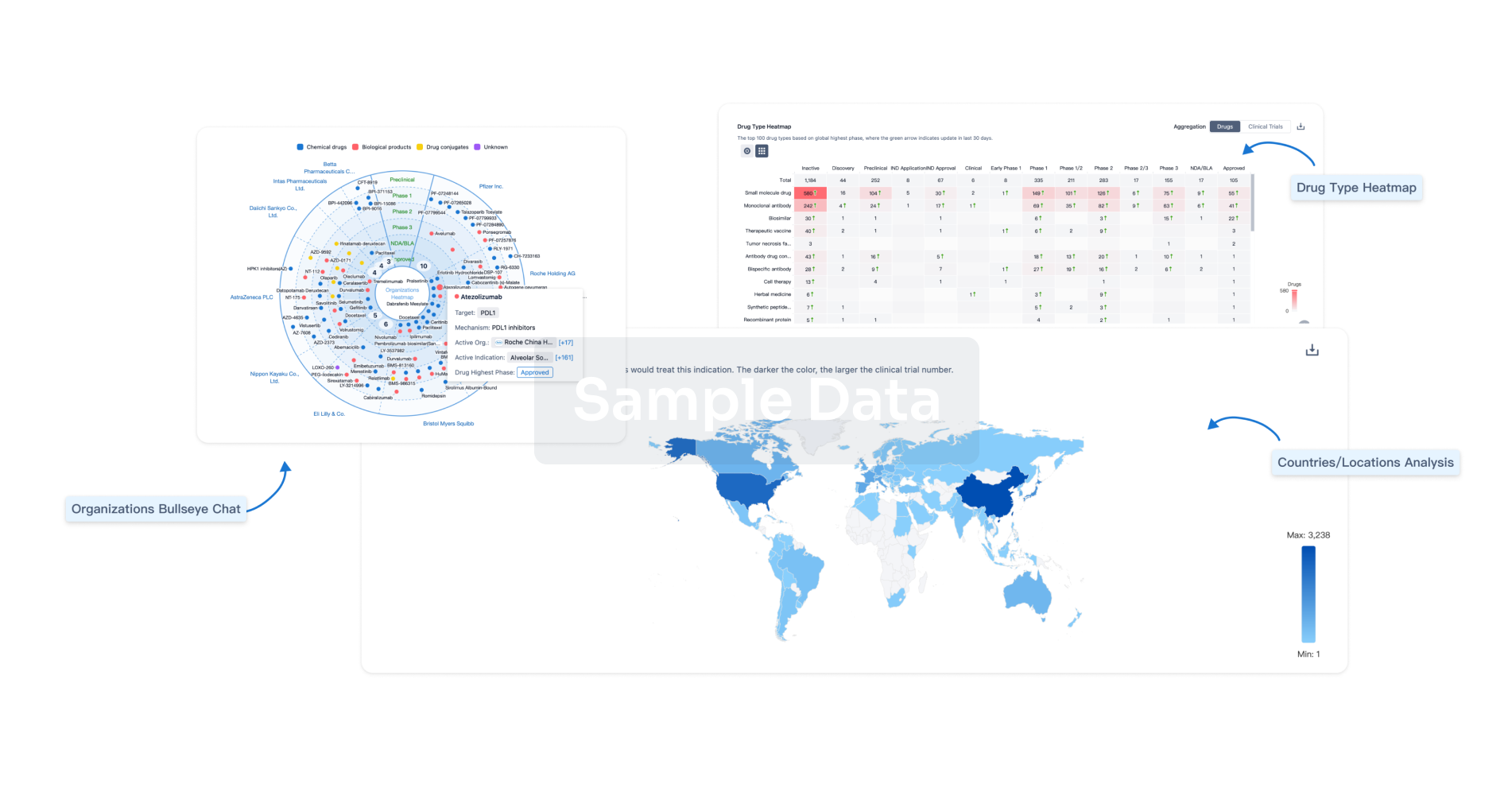Request Demo
Last update 08 May 2025
Von Willebrand Disease, Type 1
Last update 08 May 2025
Basic Info
Synonyms 1型血管性血友病, Hereditary von Willebrand disease type 1, Hereditary von Willebrand disease type 1 (disorder) + [19] |
Introduction A subtype of von Willebrand disease that results from a partial deficiency of VON WILLEBRAND FACTOR. |
Related
5
Drugs associated with Von Willebrand Disease, Type 1Target |
Mechanism F10 stimulants |
Active Org. |
Originator Org. |
Active Indication |
Inactive Indication |
Drug Highest PhaseApproved |
First Approval Ctry. / Loc. Austria [+1] |
First Approval Date27 Nov 2006 |
Target |
Mechanism vWF inhibitors |
Active Org. |
Originator Org. |
Active Indication |
Inactive Indication |
Drug Highest PhasePhase 3 |
First Approval Ctry. / Loc.- |
First Approval Date20 Jan 1800 |
11
Clinical Trials associated with Von Willebrand Disease, Type 1NCT06754852
A Phase 1/2 Study to Assess the Safety, Tolerability, Pharmacokinetics, Pharmacodynamics, and Efficacy of HMB-002 in Participants With Von Willebrand Disease (Velora Pioneer)
This is a first-in-human (FIH), Phase 1/2, open-label, dose escalation, safety, tolerability, pharmacokinetic (PK), pharmacodynamic (PD), and efficacy study of HMB-002 in participants with VWD. Part A of the study involves a single ascending dose (SAD) design to establish safety, tolerability, PK, and PD effect. In Part B of the study, the safety and tolerability of repeat dosing will be established prior to cohort expansion to explore efficacy.
Start Date06 Feb 2025 |
Sponsor / Collaborator |
NCT06610201
A Prospective, Screening Study of Bleeding and Treatment in Participants With Von Willebrand Disease
The purpose of this screening study is to accumulate information regarding bleeding events, quality of life, and the social and clinical impact of bleeds in participants with Von Willebrand Disease (VWD). Data from this study will be used to establish baseline bleeding and treatment rates in a population of participants with VWD and act as comparator data for future clinical study outcomes.
Start Date30 Aug 2024 |
Sponsor / Collaborator  Hemab ApS Hemab ApS [+1] |
NCT06064851
Delivering Transcutaneous Auricular Neurostimulation to Reduce Heavy Menstrual Bleeding in Patients With and Without Von Willebrand Disease
The objectives of this study are to determine if transcutaneous auricular neurostimulation (tAN) can modulate hemostasis, improve perceived quality of life, and improve pain during the menstrual cycle of von Willebrand Disease (VWD) patients.
Start Date27 Oct 2023 |
Sponsor / Collaborator |
100 Clinical Results associated with Von Willebrand Disease, Type 1
Login to view more data
100 Translational Medicine associated with Von Willebrand Disease, Type 1
Login to view more data
0 Patents (Medical) associated with Von Willebrand Disease, Type 1
Login to view more data
682
Literatures (Medical) associated with Von Willebrand Disease, Type 112 Mar 2025·Cureus
Carpometacarpal Joint Arthroplasty in a Patient With Concomitant Von Willebrand Disease: A Case Report
Article
Author: Florek, Jakub ; Georgiew, Filip ; Petrovych, Oles ; Bębenek, Adam
01 Feb 2025·Research and Practice in Thrombosis and Haemostasis
Clinical utility of panel-based genetic sequencing for von Willebrand disease
Article
Author: McFadyen, James D ; Van Laer, Christine ; Van Geet, Chris ; Perkins, Andrew C ; Verhamme, Peter ; Van Thillo, Quentin ; Baert, Sarissa ; Freson, Kathleen ; Labarque, Veerle ; Ramanan, Radha ; Tran, Huyen A ; Kint, Cyrielle ; Vanassche, Thomas
01 Feb 2025·Archives of Medical Research
A Ten-Year Experience with the Diagnosis of Von Willebrand Disease in Mexico Based on a Cost-Effective Strategy
Article
Author: Gomez-Rosas, Patricia ; Dominguez-Reyes, Victor Manuel ; Sanchez-Jara, Berenice ; Ortiz-Torres, Guadalupe ; Garcia-Chavez, Jaime ; Cruz-Puente, Patricia ; Moreno-Hernandez, Manuel ; Espejo-Godinez, Guillermo ; Majluf-Cruz, Karim ; Alvarado-Moreno, Jose Antonio ; Sosa-Camas, Rosa Elena ; Campos-Cabrera, Gregorio ; Rodriguez-Castillejos, Cecilia ; Majluf-Cruz, Abraham ; Arreola-Diaz, Rodrigo ; Carmona-Olvera, Paola Itzel ; Hernandez-Juarez, Jesus ; Espinoza-Islas, Julieta
2
News (Medical) associated with Von Willebrand Disease, Type 107 Feb 2025
Interim results demonstrate treatment with HMB-001 resulted in >50% reduction in treated bleeds at all tested dose levels
In second oral presentation, Hemab presented first preclinical data for HMB-002, a potential novel treatment for Von Willebrand Disease
Results from lived experience of Glanzmann thrombasthenia (GT360) and Von Willebrand Disease (VWD 360) natural history studies were included in two additional oral presentations
COPENHAGEN, Denmark and CAMBRIDGE, Mass., Feb. 7, 2025 /PRNewswire/ -- Hemab Therapeutics, a clinical-stage biotechnology company developing novel prophylactic therapeutics for serious, underserved bleeding and thrombotic disorders, today presented interim data from the ongoing evaluation of HMB-001, a novel bispecific antibody in development as first ever prophylactic treatment for the bleeding disorder Glanzmann thrombasthenia (GT). The Phase 2 study consists of a minimum 6-week prospective run-in where participants record bleeds via an electronic bleed diary, followed by 3 months of treatment with HMB-001. Interim efficacy data to date demonstrated >50% reduction in treated bleeds in all 3 tested dose cohorts. Underscoring its potential to address unmet medical needs and to expedite patient access, HMB-001 has been granted Orphan Drug Designation by the U.S. Food and Drug Administration and the UK Medicines and Healthcare products Regulatory Agency has awarded it designation under the Innovative Licensing and Access Pathway.
Hemab also unveiled compelling preclinical data for HMB-002, a potential novel treatment for Von Willebrand Disease (VWD).
These data were featured as oral presentations at the 18th Annual Congress of the European Association for Haemophilia and Allied Disorders (EAHAD) held this week in Milan, Italy.
"Glanzmann thrombasthenia is a serious and devastating bleeding disorder where patients often experience in excess of 60-80 treatment-requiring bleeds annually. These interim Phase 2 results signal the potential of a new reality for the Glanzmann thrombasthenia community, bringing us a step closer to a much-needed breakthrough in preventing bleeding," said Kate Madigan, Chief Medical Officer at Hemab. "The preclinical data for HMB-002 highlights its potential to specifically address the underlying patho-etiology and revolutionize care for the Von Willebrand Disease community, offering hope to prevent life-threatening complications and provide patients with a critical new lifeline."
Interim pharmacokinetic (PK) data from the Phase 1/2 study of HMB-001 supports the use of weekly or biweekly dosing regimens. Pharmacodynamic (PD) responses are aligned with the mechanism of action, demonstrating a dose-dependent accumulation of activated Factor VII (FVIIa) and enhanced potentiation through TLT-1 binding. Efficacy assessments indicate a reduction of over 50% in treated bleeding episodes at all tested dose levels.
In the single ascending dose (SAD) study, doses of 0.2, 0.5, and 1.25 mg/kg were evaluated, while the multiple ascending dose (MAD) study explored biweekly doses of 0.3, 0.6, and 0.9 mg/kg. The findings suggest a safe and effective dosing range of 0.3-0.6 mg/kg, while doses of 0.9 mg/kg and above were associated with elevated D-dimer levels and risk of venous thrombosis. These results provide valuable insights into optimizing dose and regimen for improved outcomes.
"Bleeding disorders such as Glanzmann thrombasthenia present significant hardships, including unpredictable and life-altering bleeds, physical pain, social stigma, and emotional isolation. Despite these burdens, preventive treatments have yet to be developed," said Suthesh Sivapalaratnam, MD, PhD, Consultant Hematologist at Barts Health NHS Trust and Associate Professor at Queen Mary University of London. He adds: "With a bleed reduction of greater than 50%, the Phase 2 results highlight the transformative potential of HMB-001, offering people with Glanzmann thrombasthenia and providers a long-awaited breakthrough that could redefine care standards and bring renewed hope to a community in urgent need of innovation."
"As a principal investigator in this study, I've seen firsthand how HMB-001 has the potential to significantly improve outcomes for people with Glanzmann thrombasthenia," said Laurent Frenzel, MD, PhD, Head of the Hemophilia Treatment and Research Center at the Necker-Enfants Malades Hospital (Paris Cité). "The Phase 2 data demonstrate promising efficacy and a manageable safety profile, representing a significant advancement in the treatment landscape. I look forward to seeing these results translate into a meaningful impact for those who have long faced limited options and unmet medical needs."
Hemab plans to complete Phase 2 study recruitment in the first half of 2025.
Hemab presented compelling preclinical data for HMB-002, a monovalent antibody uniquely designed to address VWD by increasing endogenous Von Willebrand Factor (VWF) levels and improving overall hemostasis. Unlike current treatments that often require frequent intravenous infusions or focus on symptom management, HMB-002 has the potential to provide a long-lasting, subcutaneous prophylactic solution that targets the root cause of VWD. Data demonstrate a promising safety and efficacy profile with high-affinity target-selective binding and preservation of key physiological functions of VWF when HMB-002 is bound. Administration of HMB-002 to cynomolgus monkeys resulted in a time-dependent accumulation of VWF, a corresponding rise in VWF activity, and a rise in the amount of another important blood clotting protein called Factor VIII (FVIII). The distribution of different sizes of VWF molecules (multimers) remained largely the same, suggesting that the activity levels of VWF were consistent. These results indicate that HMB-002, by boosting the levels of naturally occurring VWF, has the potential to be an effective, convenient and long-lasting preventive treatment option for people with VWD. The company is actively enrolling participants in
VELORA-Discover, a prospective observational study for individuals with Type 1 VWD, to further understand the disease's natural history and support future clinical trials.
Hemab's partner Haemnet, a specialist research and communications consultancy in the bleeding disorders community, also presented results from two natural history studies. The Glanzmann's 360 and Von Willebrand Disease 360 studies showcased the unmet needs and burdens the patients face every day.
About Glanzmann Thrombasthenia
Glanzmann thrombasthenia (GT) is a rare and severe bleeding disorder marked by debilitating, sometimes life-threatening bleeding episodes. Results from an international Glanzmann's 360 (GT360) natural history study revealed the substantial burden of this disease: 88% of the 117 participants reported at least one bleed in the previous week, with 34% of those bleeds requiring medical treatment. These bleeding episodes significantly impact patients' mental health and quality of life, with 67% reporting low mood, 52% reporting emotional problems, and 46% experiencing social isolation. Additionally, 81% of participants reported missing school or work due to bruising or bleeding. To date, there are no effective prophylactic treatment options for GT.
About HMB-001
HMB-001 is a subcutaneously administered bispecific antibody that binds and stabilizes endogenous Factor VIIa with one antibody arm and binds to TLT-1 on activated platelets with the other arm. This allows for the accumulation of endogenous Factor VIIa in the body, recruitment of Factor VIIa directly to the surface of the activated platelets, where it is known to facilitate hemostatic plug formation. HMB-001 is designed to be a first-in-class prophylactic treatment for Glanzmann thrombasthenia (GT) with the potential to treat other debilitating rare bleeding disorders. The U.S. Food and Drug Administration granted Fast Track Designation and Orphan Drug Designation to HMB-001 for the treatment of GT while the UK The Medicines and Healthcare products Regulatory Agency has awarded it designation under the Innovative Licensing and Access Pathway (ILAP). For more information, please visit clinicaltrials.gov (NCT06211634).
About Von Willebrand Disease
Von Willebrand Disease (VWD) is the most common inherited bleeding disorder, characterized by quantitative or qualitative defects in Von Willebrand Factor (VWF), often resulting in frequent mucocutaneous bleeding events and heavy menstrual bleeding in women. Severity of bleeding ranges from low-volume events to potentially life-threatening hemorrhages. Chronic blood loss frequently leads to iron deficiency anemia, exacerbating the disease burden and reducing quality of life, particularly for those with clinically understated subtypes. Despite its prevalence, current treatment options for VWD primarily focus on managing symptoms rather than addressing the underlying defect in VWF production or function.
About HMB-002
HMB-002 is a monovalent human antibody developed as the first-in-class prophylactic treatment for Von Willebrand Disease targeting the underlying root cause of the disease, a condition driven by a deficiency or defect in Von Willebrand Factor (VWF), a key regulator of hemostasis. By specifically targeting the C-terminal CK domain of VWF, which is distinct from regions critical to its essential interactions, HMB-002 shields the protein from degradation, boosting endogenous levels without compromising its function. Preclinical data suggest strong potential for meaningful therapeutic benefit. For more information, please visit clinicaltrials.gov (NCT06610201).
About Hemab Therapeutics
Hemab is a clinical-stage biotech company developing novel prophylactic therapeutics for serious, underserved bleeding and thrombotic disorders. Based in Cambridge, MA, and Copenhagen, Denmark, Hemab is progressing a pipeline of innovative therapeutic solutions, leveraging a variety of cutting-edge technologies and approaches to transform the treatment paradigm for patients with high unmet need. The company's strategic guidance, Hemab 1-2-5TM, targets building a pipeline of multiple development programs to deliver long-awaited innovation for patients with high unmet need blood-clotting disorders like Glanzmann thrombasthenia, Factor VII Deficiency, Von Willebrand Disease, and others. Learn more at hemab.com. Follow us on LinkedIn, Facebook, and X.
Media Contact:
Peg Rusconi
[email protected]
617-910-6217
SOURCE Hemab Therapeutics
WANT YOUR COMPANY'S NEWS FEATURED ON PRNEWSWIRE.COM?
440k+
Newsrooms &
Influencers
9k+
Digital Media
Outlets
270k+
Journalists
Opted In
GET STARTED
Orphan DrugClinical ResultFast TrackPhase 2
04 Oct 2019
Oct. 4, 2019 13:03 UTC
HOBOKEN, N.J.--(BUSINESS WIRE)-- Octapharma USA is sponsoring the National Hemophilia Foundation’s (NHF) 71st Bleeding Disorders Conference and introducing two new clinical trials focused on von Willebrand Disease (VWD). The clinical trials are featured in poster presentations at the NHF meeting being held in Anaheim, California through Saturday.
One clinical study will assess the efficacy and safety of WILATE® during prophylaxis in previously treated patients with VWD. This study has the primary objective to determine the efficacy of von Willebrand Factor (VWF)/Factor VIII (FVIIII) concentrate (WILATE®) in the prophylactic treatment of previously treated patients with type 3, type 2 (except 2N), or severe type 1 VWD.
“Prophylactic treatment in other congenital bleeding disorders is widely accepted as the standard of care to prevent bleeding and preserve quality of life in patients,” said Octapharma USA President Flemming Nielsen. “This form of treatment in VWD is not well characterized prospectively as yet. This study is intended to provide data on the efficacy of prophylactic treatment in reducing the rate of bleeding and on the impact of prophylaxis on the quality of life in VWD patients.”
Affecting approximately 1 percent of the population, VWD is a common inherited bleeding disorder that occurs when the blood lacks a protein that helps clotting. Type 3 VWD is the rarest and most severe form of the condition, representing approximately 5% of cases, according to the National Organization for Rare Disorders.
The second clinical trial, von Willebrand Factor in Pregnancy (VIP), is a multicenter study of WILATE® use in VWD for childbirth. The primary objective is to evaluate the:
Rate of primary postpartum hemorrhage;
Effectiveness of targeting VWF/FVIII minimum levels of 100% to 150% for delivery; and
Effectiveness of targeting the immediate 72-hour postpartum period in pregnant patients with VWD whose third trimester factor levels are less than 100%, while aiming to maintain 50% to 100% target levels after the immediate postpartum period for the first 5 to 7 days postpartum after normal vaginal delivery or the first 7 to 10 days postpartum after caesarean section.
For pregnant women with VWD who by the third trimester do not have VWF or FVIII levels greater than 50% to 100%, specific guidance is lacking for delivery planning in terms of how high a factor level should be achieved. Specifically, guidance is lacking on whether replacement therapy should target a VWF minimum level in the 100% to 150% range, for example, or a range closer to the 200% to 250% levels observed in normal pregnancy.
Octapharma is currently recruiting study sites for both clinical trials. For complete details on the WILATE® prophylaxis study, please visit here (ClinicalTrials.gov Identifier: NCT04052698).
Octapharma encourages attendees to visit its NHF conference booth (#23) for research details and product-specific information.
About WILATE®
WILATE®, von Willebrand Factor/Coagulation Factor VIII Complex (Human) Lyophilized Powder for Solution for Intravenous Injection, is indicated in children and adults with von Willebrand disease for on-demand treatment and control of bleeding episodes; and perioperative management of bleeding. WILATE® is indicated in adolescents and adults with hemophilia A for routine prophylaxis to reduce the frequency of bleeding episodes; and on-demand treatment and control of bleeding episodes. For complete prescribing information, please visit wilateusa.com.
CONTRAINDICATIONS
Do not use in patients with known hypersensitivity reactions, including anaphylactic or severe systemic reaction, to human plasma-derived products, any ingredient in the formulation, or components of the container.
WARNINGS AND PRECAUTIONS
Anaphylaxis and severe hypersensitivity reactions are possible; thromboembolic events may occur; monitor plasma levels of FVIII activity; development of neutralizing antibodies to FVIII and to VWF, especially in VWD type 3 patients, may occur; WILATE® is made from human plasma and carries the risk of transmitting infectious agents.
About the Octapharma Group
Headquartered in Lachen, Switzerland, Octapharma is one of the largest human protein products manufacturers in the world and has been committed to patient care and medical innovation since 1983. Its core business is the development and production of human proteins from human plasma and human cell lines. Octapharma employs approximately 8,314 people worldwide to support the treatment of patients in over 115 countries with products across the following therapeutic areas: Hematology (coagulation disorders), Immunotherapy (immune disorders) and Critical Care. The company’s American subsidiary, Octapharma USA, is located in Hoboken, N.J. Octapharma operates three state-of-the-art production sites licensed by the U.S. Food and Drug Administration (FDA), providing a high level of production flexibility. For more information, please visit .
###
WIL-0220
Octapharma USA, Inc.• 121 River Street, Suite 1201• Hoboken, NJ 07030 • 201-604-1130 •
AntibodyImmunotherapy
Analysis
Perform a panoramic analysis of this field.
login
or

AI Agents Built for Biopharma Breakthroughs
Accelerate discovery. Empower decisions. Transform outcomes.
Get started for free today!
Accelerate Strategic R&D decision making with Synapse, PatSnap’s AI-powered Connected Innovation Intelligence Platform Built for Life Sciences Professionals.
Start your data trial now!
Synapse data is also accessible to external entities via APIs or data packages. Empower better decisions with the latest in pharmaceutical intelligence.
Bio
Bio Sequences Search & Analysis
Sign up for free
Chemical
Chemical Structures Search & Analysis
Sign up for free

